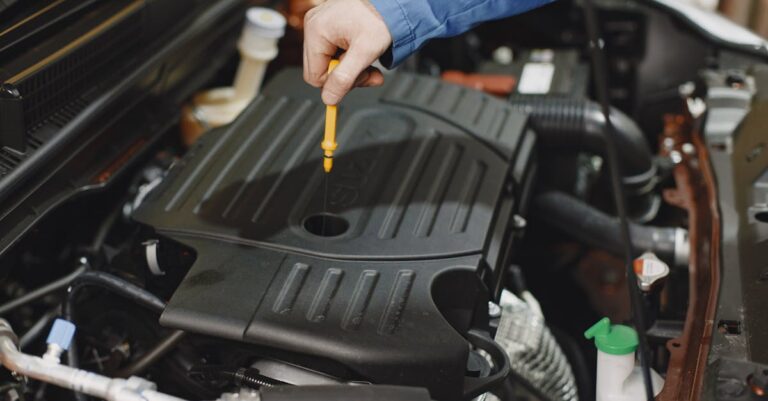Table Of Content
- Signs Of Alternator Failure In Cars: Don’t Get Stranded!
- What Exactly Does an Alternator Do Anyway?
- Why Do Alternators Fail? Common Culprits
- Spotting the Trouble: Top Signs Your Alternator is Failing
- What Happens if You Ignore These Signs?
- Testing Your Alternator: DIY vs. Professional Help
- Replacing Your Alternator: What’s Involved?
- Preventative Maintenance: Keeping Your Alternator Happy
- Conclusion: Heeding the Signs Saves Headaches (and Money!)
- Frequently Asked Questions (FAQs)
Signs Of Alternator Failure In Cars: Don’t Get Stranded!
Picture this: you’re cruising down the highway, music blasting, maybe heading out on a road trip or just commuting home after a long day. Suddenly, the lights on your dashboard flicker, the radio cuts out, and your car starts to lose power. Panic sets in. What’s going on? More often than not, the culprit behind these electrical gremlins is a failing alternator. Getting stranded is nobody’s idea of fun, right? Recognizing the warning signs of alternator trouble early can save you a whole lot of hassle, time, and potentially expensive tow truck rides.
Think of your car’s electrical system like the circulatory system in your body. If the heart (the battery) isn’t getting recharged properly by the lungs (the alternator), things start shutting down. It’s a critical component, yet many drivers don’t know much about it until it decides to quit. So, let’s dive deep into the world of alternators, explore why they fail, and most importantly, learn how to spot the telltale signs that yours might be on its last legs.
What Exactly Does an Alternator Do Anyway?
Before we jump into the symptoms of failure, let’s get a handle on what this vital piece of equipment actually does. It’s easy to think the battery powers everything in your car, but that’s only half the story.
The Unsung Hero of Your Car’s Electrical System
The alternator is essentially your car’s own little power plant. While the engine is running, the alternator converts mechanical energy (from the engine’s rotating crankshaft, via a drive belt) into electrical energy (Alternating Current, or AC). This AC power is then converted into Direct Current (DC) power that your car’s electrical systems need. Its main jobs are twofold: first, to power all the electrical components while the car is running – headlights, wipers, radio, power windows, heated seats, navigation systems, you name it. Second, and crucially, it recharges the car battery, ensuring it has enough juice to start the car next time and to provide power when the engine isn’t running.
Without a functioning alternator, your car would solely rely on the battery’s stored power, which wouldn’t last very long once the engine is running and all those electrical systems are drawing current. It’s the continuous power generation by the alternator that keeps everything humming along smoothly.
Battery vs. Alternator: A Quick Power Play
It’s a common misconception to blame the battery for all electrical woes. Here’s the key difference: the battery provides the initial burst of power needed to crank the engine and get it started. It also acts as a voltage stabilizer and provides power when the engine is off or when the electrical demand temporarily exceeds the alternator’s output (like when you have the AC, wipers, headlights, and stereo all going at once while idling). The alternator takes over once the engine is running, supplying power to the electrical systems and recharging the battery. Think of the battery as the starting sprinter, and the alternator as the marathon runner that keeps things going for the long haul.
If your car won’t start, the battery could indeed be dead. But if your car starts fine and then dies while driving, or if you keep needing jump starts, the alternator is a much more likely suspect because it’s failing to recharge the battery and power the systems.
Why Do Alternators Fail? Common Culprits
Alternators work hard, spinning thousands of times per minute and operating under high temperatures. Like any mechanical or electrical component, they don’t last forever. Several factors can contribute to their demise.
Wear and Tear: The Inevitable Aging Process
This is the most common reason. Inside the alternator are components like bearings, brushes, the rotor, and the stator, all subject to wear over time and mileage. The bearings can seize or become noisy, the carbon brushes that transmit current can wear down, and internal windings can break or short out. Just like tires or brake pads, alternators have a finite lifespan, typically ranging from 7 to 10 years or around 100,000 to 150,000 miles, although this can vary greatly depending on driving conditions and the quality of the part.
Heat and Electrical Load: A Double Whammy
Alternators generate heat as they produce electricity, and they’re usually located in the hot engine bay. Excessive heat can accelerate the breakdown of internal components and insulation. Furthermore, modern cars are packed with electronics. Running lots of accessories simultaneously (think heated everything, powerful sound systems, aftermarket lights) puts a heavy electrical load on the alternator, forcing it to work harder and potentially shortening its lifespan, especially if it’s already aging.
Fluid Leaks: A Slippery Slope to Failure
Sometimes, the alternator itself isn’t the root cause, but rather collateral damage. Leaking engine oil or power steering fluid dripping onto the alternator can contaminate its internal workings. Oil can saturate the brushes and foul the slip rings, while coolant leaks can cause corrosion. These contaminants interfere with electrical conductivity and can lead to premature failure.
Spotting the Trouble: Top Signs Your Alternator is Failing
Okay, now for the main event! Your car usually gives you some warning signs before the alternator completely gives up the ghost. Paying attention to these clues can help you address the problem before you’re left stranded.
1. The Dreaded Warning Light
This is often the first and most obvious sign. Most cars have a dedicated warning light on the dashboard that indicates a problem with the charging system.
ALT, GEN, or Battery Symbol? Decode the Dash
This light might be labeled “ALT” (alternator), “GEN” (generator), or it might simply be an icon shaped like a battery. It’s a common point of confusion – seeing a battery light doesn’t always mean the battery is bad. It often means the battery isn’t being charged correctly, pointing directly at the alternator or related charging system components (like the voltage regulator, which is often built into the alternator). If this light illuminates while you’re driving, don’t ignore it! It’s signaling that your car’s electrical system is running purely on battery power, which won’t last long.
2. Dimming or Overly Bright Lights
Your car’s lighting system is a great indicator of alternator health. An alternator struggling to produce consistent power can cause noticeable changes in light intensity.
Headlights, Dash Lights, and Interior Lights Acting Weird?
Are your headlights noticeably dimmer than usual, especially at idle, but maybe brightening up when you rev the engine? Or conversely, are they pulsing or becoming excessively bright? Both scenarios suggest inconsistent voltage output from the alternator. Dimming lights mean the alternator isn’t producing enough power, forcing the system to draw from the battery. Flickering or overly bright lights can indicate a problem with the voltage regulator within the alternator, which is failing to control the output, potentially damaging bulbs and other electronics.
3. Weak or Dead Battery
As we discussed, the alternator recharges the battery. If the alternator is failing, it won’t be able to keep the battery topped up.
Is it Really the Battery… or Something Else?
You might find yourself needing frequent jump starts, or the car might struggle to crank over, especially after sitting overnight. While batteries do eventually wear out (typically after 3-5 years), a relatively new battery that keeps dying is a strong indicator that the alternator isn’t doing its job. Replacing the battery might provide a temporary fix, allowing you to start the car a few more times, but if the underlying charging problem isn’t addressed, the new battery will soon be drained too.
4. Strange Noises: Whining, Grinding, or Growling
Your ears can be valuable diagnostic tools. Unusual sounds emanating from the front of the engine, near where the alternator is located, can signal trouble.
Listen Closely: What Do Those Sounds Mean?
A high pitched whining sound that often changes pitch with engine RPM can indicate that the bearings inside the alternator are starting to fail or that the voltage regulator is forcing the alternator to work overtime. A more severe grinding or growling noise usually points to badly worn bearings, potentially nearing seizure. Sometimes, a loose or worn-out drive belt that spins the alternator can also cause squealing noises, so it’s important to differentiate, but any new noise from that area warrants investigation.
5. Electrical Accessory Problems
When the alternator isn’t providing enough stable power, the car’s computer often prioritizes essential systems (like the engine and ignition) and may reduce power to non essential accessories.
Slow Wipers, Power Windows, or Radio Glitches?
You might notice your power windows operate much slower than usual, your windshield wipers move sluggishly even on high speed, your heated seats don’t get very warm, or your radio might cut out, display errors, or reset itself. These seemingly unrelated electrical glitches can all stem from the alternator not supplying adequate voltage and current to run everything properly.
6. The Smell of Burning Rubber or Wires
Unpleasant smells are almost always a sign something’s wrong. If you catch a whiff of burning rubber or hot wires coming from your engine bay, pull over safely as soon as possible.
A burning rubber smell could indicate that the alternator’s drive belt is slipping on the pulley because the pulley itself is seized or misaligned due to failing bearings. The friction generates intense heat and the smell. A smell like burning electrical wires suggests the alternator itself is overheating, potentially due to overloaded windings or failing internal components creating excessive resistance. This is a serious symptom that needs immediate attention to prevent further damage or even a potential fire.
7. Difficulty Starting or Frequent Stalling
While often linked to a weak battery (which, as we know, can be caused by a bad alternator), a failing alternator can also directly impact starting and running.
The spark plugs need sufficient electrical power to ignite the fuel air mixture in the engine cylinders. If the alternator isn’t providing enough power, the spark can become weak, leading to hard starting, misfires, or even stalling, especially when electrical demand is high (like at night with lights and accessories on). The engine might run roughly or hesitate during acceleration.
What Happens if You Ignore These Signs?
Ignoring the warning signs of a failing alternator is like ignoring a leaky roof – it might seem like a minor inconvenience at first, but it inevitably leads to bigger, more expensive problems. If you keep driving with a faulty alternator, you’re essentially running solely on battery power.
Once the battery is depleted (which can happen surprisingly quickly, sometimes in less than 30 minutes depending on the electrical load), your car will shut down. The engine will stall, power steering and brakes (which often rely on engine power or electrical assistance) may become difficult to operate, and you’ll be stranded. This isn’t just inconvenient; it can be dangerous, especially if it happens at night, in bad weather, or in heavy traffic. Furthermore, constantly draining and attempting to recharge a battery with a bad alternator can permanently damage the battery itself, meaning you’ll end up needing to replace both components instead of just the alternator.
Testing Your Alternator: DIY vs. Professional Help
So, you suspect your alternator might be going bad. What next? You have a couple of options for testing.
A simple DIY test involves using a multimeter (voltmeter). With the engine off, check the battery voltage; it should be around 12.4-12.7 volts. Then, start the engine and check the voltage again across the battery terminals. With a healthy alternator charging, the voltage should increase to somewhere between 13.8 and 14.7 volts (check your car’s specific range). If the voltage stays low (near the initial battery voltage) or reads excessively high, it indicates a charging system problem, likely the alternator.
However, this simple voltage test isn’t always conclusive. Alternators can fail intermittently or under load. Many auto parts stores offer free charging system tests using specialized equipment that can check the alternator’s amperage output and detect issues like bad diodes or voltage regulator problems under simulated load conditions. For a definitive diagnosis, especially if symptoms are intermittent, taking your car to a qualified mechanic is the best bet. They have advanced diagnostic tools and the expertise to pinpoint the exact cause of the electrical issue, whether it’s the alternator, battery, wiring, or drive belt.
Replacing Your Alternator: What’s Involved?
If testing confirms the alternator is faulty, replacement is usually the only option (rebuilding is less common these days). The process generally involves disconnecting the battery (very important!), loosening and removing the serpentine belt (or V-belt), disconnecting the electrical connectors from the alternator, unbolting the old alternator, installing the new one, reconnecting everything, and tensioning the belt correctly.
While it might sound straightforward, access can be tight on many modern cars, sometimes requiring the removal of other components. Proper belt tensioning is also critical – too loose and it will slip, too tight and it can damage the alternator bearings and other driven components. If you’re comfortable working on cars and have the right tools, it’s a manageable DIY job for some models. However, for many people, having a professional mechanic handle the replacement ensures it’s done correctly and safely.
Preventative Maintenance: Keeping Your Alternator Happy
While you can’t completely prevent an alternator from eventually wearing out, you can take steps to potentially extend its life:
- Regular Inspections: Have your mechanic visually inspect the alternator and drive belt during routine maintenance. Look for cracks or fraying on the belt and ensure proper tension.
- Check for Leaks: Address any engine oil or coolant leaks promptly to prevent fluid from dripping onto the alternator.
- Keep Connections Clean: Ensure battery terminals and alternator connections are clean and tight. Corrosion can increase resistance and strain the system.
- Avoid Deep Battery Discharge: Try not to run the battery completely flat. Deep discharges put extra strain on the alternator when it tries to recharge a severely depleted battery.
- Moderate Electrical Load: While modern alternators are designed for higher loads, constantly running every high-draw accessory simultaneously can contribute to wear over the long term.
Conclusion: Heeding the Signs Saves Headaches (and Money!)
Your car’s alternator might not be the most glamorous component, but it’s absolutely essential for keeping your vehicle running reliably. From powering your headlights on a dark night to keeping your phone charged on a long drive, it works tirelessly behind the scenes. Recognizing the subtle (and not so subtle) signs of failure – the warning lights, dimming headlights, strange noises, electrical glitches, starting issues, or weird smells – is key to avoiding an inconvenient and potentially dangerous breakdown. Don’t dismiss these symptoms! Getting your charging system checked out at the first sign of trouble can often mean the difference between a manageable repair and being stuck on the side of the road, possibly needing a new battery along with the alternator. Stay vigilant, listen to your car, and keep that electrical heartbeat strong!
Frequently Asked Questions (FAQs)
1. How long does a car alternator typically last?
There’s no exact expiration date, but most alternators last between 7 to 10 years, or roughly 100,000 to 150,000 miles. However, factors like driving conditions (frequent short trips vs. highway driving), climate (extreme heat is harder on them), electrical load (lots of accessories), and the quality of the alternator itself can significantly impact its lifespan. Some might fail sooner, while others can last much longer.
2. Can I drive my car with a failing alternator?
It’s highly inadvisable. While the car might run for a short period solely on battery power after the alternator fails, it’s a ticking clock. Once the battery drains (which could be anywhere from a few minutes to maybe an hour, depending on the battery’s charge and electrical usage), the engine will stall, and you’ll lose power assist for steering and braking. Driving with a known faulty alternator risks getting stranded in an unsafe location and can also damage the battery.
3. How much does it cost to replace an alternator?
The cost varies widely depending on your car’s make and model, whether you use an OEM (Original Equipment Manufacturer) or aftermarket part, and labor rates in your area. Generally, you can expect the part itself to cost anywhere from $150 to over $600. Labor costs can add another $100 to $500+, depending on how difficult the alternator is to access. All in, you’re typically looking at a range of $300 to $1000 or more for a professional replacement.
4. Can a bad alternator drain a new battery?
Absolutely. This is a very common scenario. If the alternator isn’t recharging the battery while the engine is running, the car’s electrical systems will draw power directly from the battery until it’s depleted. Installing a new battery without fixing the faulty alternator will only result in the new battery getting drained as well, potentially damaging it in the process. Always diagnose the charging system if you experience repeated dead batteries.
5. What’s the difference between an alternator and a generator?
Both produce electricity, but they work differently. Older vehicles (pre 1960s) often used DC generators. Alternators, which produce AC power that’s then converted to DC, became standard because they are lighter, more reliable, more efficient (especially at lower engine speeds/idle), and can produce more power to meet the demands of modern vehicle electronics. Essentially, an alternator is the modern, more efficient evolution of the automotive generator.









